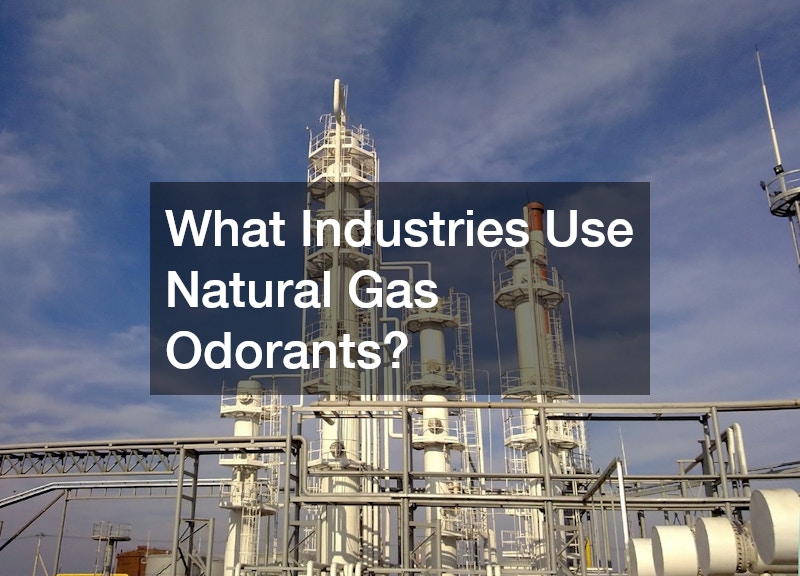
Natural gas is a vital energy source commonly used across various industries, but in its natural state, it is both colorless and odorless. To ensure safety and detect leaks, an odorant is added, giving natural gas its characteristic smell. This enhancement is crucial for numerous industries where the use of natural gas odorants provides a safety measure and operational efficiency.
The unmistakable rotten egg scent associated with natural gas is due to these odorants, primarily mercaptans, which are added in trace amounts. This added distinct smell is vital for averting potential hazards.
Given the significant role of natural gas odorants in safety, understanding which industries rely heavily on them provides valuable insights into industrial safety practices.
This article delves into the specific industries that make extensive use of natural gas odorants. By exploring these industries, we can appreciate the crucial role that odorants play in maintaining safety and efficiency. With a detailed view, we uncover how these sectors implement natural gas odorants, enhancing both their operations and ensuring public safety.
Residential and Commercial Heating
In residential and commercial buildings, safety concerns about natural gas leaks are paramount. Natural gas odorants, with their distinct scent, are essential in these settings for early leak detection. Introducing an odorant into the gas supply helps residents and business owners quickly identify leaks and take corrective action.
This is especially crucial during colder months when the use of heating systems spikes. Timely detection facilitated by natural gas odorants averts disasters and ensures community safety. The reliance on these odorants is a prime example of how a simple additive can significantly contribute to safety in residential and commercial heating.
Across urban centers, given the density of residential and commercial properties, the importance of this system becomes even more pronounced. Implementing this safety measure helps maintain public trust in natural gas as a heating source. The widespread usage of natural gas in this sector highlights the broad-reaching benefits of odorization practices.
Industrial Manufacturing
Industrial manufacturing relies heavily on natural gas for its intense energy needs, including use in processes such as heating, drying, and power generation. Factories use natural gas odorants as a critical safety mechanism to protect workers and facilities. Robust leak detection protocols, enhanced by these odorants, prevent potential workplace hazards.
Smelters, refineries, and glass production facilities are examples where natural gas is indispensable. By incorporating odorants, these industries ensure quick action can be taken should leaks occur, thereby minimizing the risk of accidents. This practice underscores the focus on both production efficiency and stringent safety standards that characterize the manufacturing sector.
Moreover, operational protocols in these industries often require strict adherence to safety regulations. Natural gas odorants are, therefore, an integral part of compliance, ensuring industrial workplaces remain secure. This safety measure fortifies trust in manufacturing settings that continuously use natural gas for operational purposes.
Food Processing
The food processing industry benefits significantly from natural gas odorants due to the substantial use of natural gas for heating, cooking, and baking processes. Maintaining safety standards to ensure product quality and worker safety is paramount in this sector. The use of odorized natural gas allows food processing plants to quickly detect any leaks, mitigating risks to both personnel and product output.
In facilities where natural gas is used extensively, rapid leak identification thanks to odorants is critical for maintaining rigorous health and safety standards. These precautions ensure continuous operation without disruption, protecting equipment investments and production timelines. The inclusion of odorants in natural gas serves as a frontline defense against potential operational downsets.
Moreover, ensuring that gas leaks do not compromise food hygiene is an additional layer of safety achieved through the use of odorants. The presence of these odorants adds a necessary protective measure that aligns with the sector’s stringent safety mandates. As such, the food processing industry exemplifies the strategic implementation of odorant-infused gas for dual purposes of safety assurance and operational integrity.
Natural gas odorants cater to an essential need by transforming an invisible potential hazard into a detectable safety assurance measure. The industries that employ them stand as testament to their effectiveness. This critical tool in modern industrial safety paradigms will continue to be essential as long as natural gas remains a staple energy source.
.




